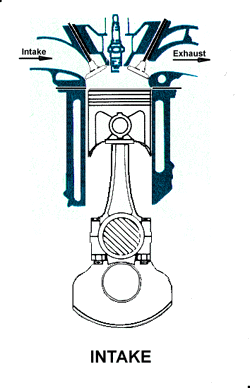Istituto Professionale di Stato per l’Industria e l’Artigianato “CARLO CATTANEO”
Dalla prima alla terza rivoluzione industriale: il progresso nella scienza e nella tecnologia
How car engines work
The idea of the petrol car engine is to convert petrol into motion.
The easiest way is to burn the petrol inside an engine.
There are three different kinds of internal combustion engines:
-
Diesel engines;
-
Petrol engines;
-
Gas turbine engines.
There are also external combustion engines, for example the old steam train (or boat) engines.
The fuel (coal, wood, oil..) in a steam engine burns outside the engine to heat water and create steam.
This steam pressure sets up motion inside the engine.
Internal combustion engine is more efficient then external, because takes less fuel and because is smaller.

Strokes
Most of the cars use a four stroke combustion cycle to convert petrol into motion. These strokes are:
-
Intake Stroke: The piston starts at the top, the intake valve opens and the piston moves down to let the engine take in a cylinder-full of air and petrol.
-
Compression Stroke: The piston moves back up to compress the fuel/air mixture. Compression makes the explosion more powerful.
-
Combustion Stroke: When the piston is on the top, the spark plug emits a spark to ignite the petrol.
-
Exhaust Stroke: The exhaust valve opens and the exhaust gases go out of the tail pipe.